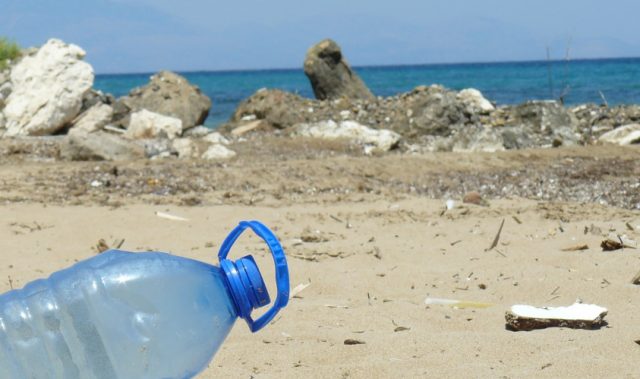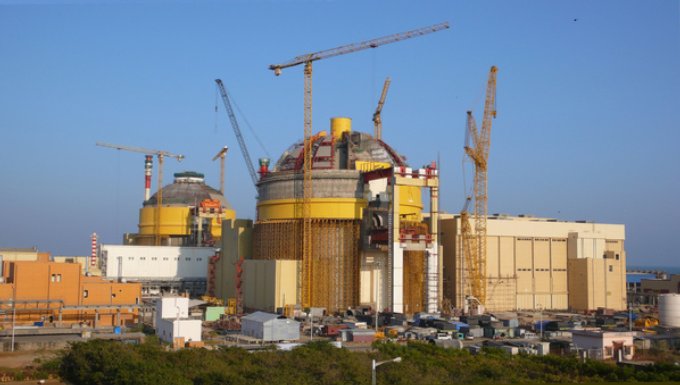
AsianScientist (Dec. 5, 2014) – By Nalaka Gunawardene – Combining new technologies with better policies can help find sustainable transport solutions that offer South Asian urban populations better mobility without compromising air quality.
Countries in the region, home to some of the world’s most congested and chaotic roads, now realize that widening roads or building new ones is not the solution. Urban mobility requires a more systematic approach that balances modern conveniences with safeguarding public health and the environment.
Today, planners acknowledge that the car-centric development model does not suit countries where a vast majority does not own cars. A much better strategy is to invest in efficient mass transit systems—using buses or trains—while also supporting non-motorized transport options such as walking and cycling.
These lessons were highlighted at two regional events held in Colombo, Sri Lanka, from 19-21 November 2014: Better Air Quality (BAQ) conference and the Eighth Inter-governmental Regional Environmentally Sustainable Transport (EST) Forum.
Over 1,000 delegates explored how transport, energy and industry sectors impact Asia’s air quality, and what policies and technologies can help reverse alarming negative trends.
Three zeros
The meeting revisited last year’s Bali Declaration that identified ‘Three Zeros’ as goals for Asian transport systems—Zero Congestion, Zero Pollution and Zero Accidents. While that might be a long term aspiration, discussions centerd around how to address negative trends impacting public health, economic productivity and climate.
Some solutions being tried out in progressive cities do not require huge investments. An example is designating bus lanes, to allow priority movement for buses that carry more people cheaply.
While governments address policies and regulations, citizens can also play a part. One option: avoiding motorized transport for short trips, to reduce congestion in city centres.
However, most South Asian cities would fail the ‘walkability test’. Their roads are not designed or maintained to enable safe walking or cycling.
A mobile phone app now allows Asian pedestrians to take geo-tagged photos of problems with road pavements (sidewalks). These images can be uploaded in real-time to a website, where researchers can access the crowd-sourced data.
“The Walkability app allows a citizen to audit the availability of walkable sidewalks and footpaths. At the same time, it educates users on what basic facilities should sidewalks have to make walking more pedestrian-friendly,” said Parthaa Bosu, India director and South Asia liaison officer with Clean Air Asia (CAA), a regional partnership of more than 250 organisations working on air quality issues.
In Colombo, the CAA also launched a regional campaign to ‘nudge’ city dwellers to drive less and walk more. Initially, it would use traffic signs reminding people of the many benefits of walking. The campaign was field-tested in Pasig City, Metro Manila, in the Philippines.
Health and climate
The pursuit of clean air has never been more urgent. Policy and public attention to air quality is especially needed in South Asia, where motor vehicle exhausts are the single largest factor causing outdoor air pollution.
In Sri Lanka, for example, over 60 percent of outdoor air pollutants emerge from vehicles burning petrol or diesel. This is due to the rapid growth in vehicle fleets, poor fuel quality, use of sub-standard or outdated vehicles/parts, and widespread traffic congestion.
Many health effects are caused by prolonged exposure. The biggest ‘villain’ is tiny pieces of solid or liquid matter floating in the air, collectively called particulate matter (PM). In India alone, PM 2.5 caused an estimated 627,000 deaths in 2010—making it the nation’s fifth largest killer.
In recent years, more evidence has emerged on the various health effects of polluted air. The World Health Organisation (WHO) says that by reducing air pollution levels, countries can reduce the burden of disease from stroke, heart disease, certain types of cancer, and both chronic and acute respiratory diseases including asthma.
India’s Center for Science and Environment (CSE), an independent research and advocacy group, has for years pointed out the particular hazards of diesel fuel. On average, a diesel vehicle emits seven times more air toxins than gasoline (petrol) cars of comparable engine power. Diesel exhausts are now in WHO’s Group 1 list of cancer-causing substances, along with asbestos, arsenic and tobacco.
In Colombo, CSE highlighted research implicating black carbon, a fraction of the particulate matter that is a short-term climate forcer.
“We simply need to control diesel vehicle emissions. Recent scientific findings tell us that diesel fumes—because they contain high levels of black carbon—also contribute to global warming. This has blurred the boundaries between the local and global impacts of pollution,” said Sunita Narain, CSE’s director general.
Deadly diesel
Diesel is widely used in South Asia, where governments have priced it lower than gasoline in the hope of subsidising public and goods transport. However, the subsidy is abused by a large number of diesel cars and sports utility vehicles (SUVs).
Anumita Roychowdhury, CSE’s director for research and advocacy, said: “The dominant use of high sulphur diesel and poor quality vehicle technology are aggravating both local toxic risks as well as climate risk because of high black carbon emissions. This multiple burden of risks demands active, cohesive and aggressive policy response…to phase out dirty diesel and introduce clean diesel.”
Quantifying public health costs of polluted air is never easy, but the evidence base is growing. In Sri Lanka, where diesel vehicles make up nearly half of the total fleet, a 2006 study estimated diesel fumes to cause health problems costing up to LKR 22 billion (US$168 million) per year in Greater Colombo area alone.
The country’s sole oil refinery currently cannot clean up diesel sufficiently well. Modifications are estimated to cost around US$500 million. It seems high, but the health costs piling up annually are higher.
Some progress is being made, albeit slowly. CSE commended the Lankan government for using fiscal policies to discourage import of new diesel vehicles (taxed at 400 percent, nearly twice as much as gasoline ones).
In mid 2014, Sri Lanka’s state owned oil company started selling a higher grade diesel with low sulphur content of 10 parts per million (ppm). It is only available on a limited scale for now, but is to be rolled out everywhere—just as lead-free gasoline was introduced incrementally a dozen years ago. It was preceded by a decade of advocacy.
South Asia’s quest for cleaner air progresses in fits and starts, with occasional backsliding. Policymakers need support from researchers and advocacy groups to stay on track.
Nalaka Gunawardene is a Colombo-based science writer, blogger and development communication consultant. He is also a trustee of SciDev.Net. The views in this column are his own.
——–
Source: SciDev.Net.
Disclaimer: This article does not necessarily reflect the views of AsianScientist or its staff.












